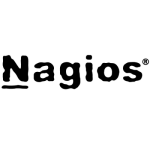What is our primary use case?
We've primarily used Auvik for:
- network monitoring,
- mapping out client networks,
- and being able to get remote access to networking equipment.
How has it helped my organization?
Being able to get documentation through ConnectWise Manage and IT Glue is one of the biggest ways we're able to reduce our response time. Auvik provides relevant documentation and information from endpoints that we would normally have to manually collect. If we need to open a case with Dell, HP, FortiClient, or FortiGate, Auvik does a fantastic job collecting and providing the information required to our team so they know exactly what we're dealing with.
Auvik helps visualize the network mapping/topology reorganization but we can't always export the information and have that be the best network map when we're presenting to a client. However, with the exported information the solution provides us and a few touch-ups in Visio, we can clean the information up and make it very presentable.
Auvik has improved our IT team's visibility into our remote and distribution networks globally by providing us with a single pane of glass that most of our teams can access. This allows our escalation team and project team to quickly identify and fix network problems, or set alerts so we are notified of any issues. This is a fantastic feature.
Having visibility is very important for our IT teams because being able to see and communicate with everyone quickly and easily is a huge component of transparency and making sure everyone is in the right place.
Auvik keeps our device inventories up to date. We found that without Auvik, we were not able to get all of our network equipment into ConnectWise Manage, and it was difficult to keep track of all the relevant data. With Auvik, we were able to get everything set up efficiently and have all the information we need at our fingertips.
Auvik's ability to keep our device inventory updated has saved us time.
We spent 10 to 20 hours a year updating and validating information before Auvik. Auvik has dramatically cut that down.
Since we've been using Auvik, communicating with our escalation team has been a lot more concise. We can focus on issues easier when it's a client that has Auvik because we can pinpoint exactly what's going on with their network. This dramatically increases our time to troubleshoot and reduces how long it takes to identify an issue and resolve it.
We have a client that has two different locations with at least one location using Auvik. The solution has been fantastic in helping pinpoint their networking equipment and firewalls and validating and providing data to the client on the performance of their network equipment. Auvik has been fantastic at providing our medical institutions with real-time data on their network and monitoring. We work with medical billing companies and it's very important for them to keep their networks up and running. It gives everyone peace of mind knowing that Auvik will notify all of us when there's a problem. Most of our clients are in medium size business areas, with a lot of them being singular locations. We have some clients in the manufacturing space where we use Auvik for monitoring temperatures in the environment.
What is most valuable?
The network discovery feature allows us to put in a subnet and have the software automatically detect all devices connected to that subnet. Once the SMP is set up correctly, we can then go to our clients and tell them which devices are connected to each other. Being an MSP, it's beneficial to be able to go to our clients and require as little documentation from them as possible, as long as we have access to help them discover their own network. We've had a few clients that we've taken over from departing IT people who didn't leave us with much information. Auvik has helped us become successful with those clients.
Auvik's monitoring and management functions are easy to use.
It is easy to use but it's not intuitive until we familiarize ourselves with the solution. Once we are familiar with the solution it is easy to set up.
The solution provides a single integrated platform for a number of our clients.
We have integrated our RMM which has multiple components with Auvik because from a network monitoring and management perspective, having a single integrated platform is very important.
Auvik helps our team to focus on high-value tasks and delegating. One of the great advantages of Auvik is its ability to automate the collection of information. This is an immensely important part of our operation, and it makes automating the process very efficient.
I haven't used many on-prem network monitoring solutions, but the fact that Auvik's in the cloud and we can switch between different clients very quickly is a huge win. It may take a little bit longer to connect to a device when we're doing it through the Auvik portal in the cloud, but we don't have to VPN in or do anything else to connect.
What needs improvement?
The training is not intuitive. The little bit I've done with the training is fantastic but I would like to have a bit more intuitiveness.
For how long have I used the solution?
I have been using Auvik for two years.
What do I think about the stability of the solution?
We've never had any problems with the tool itself, but sometimes we have issues with equipment or lack of documentation. Auvik has never been at fault though. The only time Auvik had a problem was during the AWS outage that impacted 75 percent of our tools.
What do I think about the scalability of the solution?
The Auvik probe is designed for businesses of all sizes. Once it's deployed, it automatically starts pulling in data and scanning our network. Even interns can use it, and it's easy to hand off to other team members.
How are customer service and support?
Auvik's tech support is the best I've ever used. I only opened one case with them, and within five minutes the support person called me and we resolved everything within an hour. He even went above and beyond to resolve the issue. I've been working in tech support for over a decade now and that was one of the best people I've ever worked with. We found out that no one had updated Auvik's API integration with ConnectWise Manage. The support person walked me through the process and shared everything that was reported. The fact that he called and walked me through the steps, especially as I was a new person to Auvik, left a big impression. I compare all of our other vendor support to Auvik's support, with Auvik being the gold standard.
How would you rate customer service and support?
Which solution did I use previously and why did I switch?
We previously used LogicMonitor but we didn't leverage it because it was absolutely atrocious, painful to use, and did not compare to Auvik in the slightest.
How was the initial setup?
The initial setup is straightforward and I look forward to deploying the solution each time because of its ease.
I've deployed the solution to at least three or four of our clients. I've been the one to clean up the subnets and get everything mapped out with credentials or find missing credentials. The biggest aspect that slowed anything down was our lack of documentation or having to confirm exactly what we need to do in order to fully deploy.
We've mostly installed Auvik on preexisting servers and the first thing we do is set up a probe. We find the server we're going to use as our deployment server and install it there. It takes five minutes to get everything set up. Auvik then starts scanning to find the information. From there the solution tells us what credentials are missing, and if we have them we start entering the credentials. Within a day we have a full network map. It takes some time for Auvik to fully discover and do everything it requires.
Deploying Auvik is one of my main responsibilities as part of the onboarding team.
We started having information populate within half an hour of doing its initial discovery. The one client we had the most documentation on had most of the environment mapped out within an hour. Some had 10 different subnets we had to go through. It was a lot of discovery, but the solution was also validating credentials on our side. Auvik was fantastic to use and provided too much data at times.
What about the implementation team?
The implementation is completed in-house and only requires one person.
What was our ROI?
I have seen time-to-value with Auvik. I use the solution frequently when we do onboarding or when we are trying to assess a situation in a client's environment.
What's my experience with pricing, setup cost, and licensing?
We can't put a price tag on the efficiency and reliability of Auvik.
The pricing model makes a lot of sense and it's pretty reasonable considering it's based on the Managed Network devices that we have out there. We've been able to wrap that efficiently into a lot of our contracts when we're selling a full IT solution.
Compared to other solutions Auvik is streamlined so even if we're paying more for Auvik, it reduces the overall amount of time that I have to put in one place, which means I can bill for other items and take on other billable tasks.
Which other solutions did I evaluate?
We evaluated two other security providers, but they weren't direct competitors. Lionguard is more focused on event security, while the other provider is more focused on guarding property. There are some overlaps, but they provide different tasks.
What other advice do I have?
I give the solution a 10 out of 10.
We're not using a lot of the automation and so, we're not as familiar with it as we could be. We've been dabbling with the alerts, and that's where we're looking to expand. But I'm not familiar with the automation side of Auvik.
Once we know what we're doing Auvik is a very efficient tool. It's very different from a lot of other tools. That's just the nature of it being a network management tool. Auvik is excellent at what it does.
There is very minimal maintenance required and Auvik is not usually the cause of this problem. Maintenance usually occurs when someone is working on a project and does not update Auvik or the project's documentation so that the rest of the team can update it.
When deploying Auvik for the first time we must make sure we have our documentation ready to go when doing a mass deployment to new sites or replacing our current existing one. The lack of documentation from the company using the solution is the only aspect that slows Auvik down.
Which deployment model are you using for this solution?
Public Cloud
If public cloud, private cloud, or hybrid cloud, which cloud provider do you use?
Amazon Web Services (AWS)
Disclosure: PeerSpot contacted the reviewer to collect the review and to validate authenticity. The reviewer was referred by the vendor, but the review is not subject to editing or approval by the vendor. The reviewer's company has a business relationship with this vendor other than being a customer: MSP





















